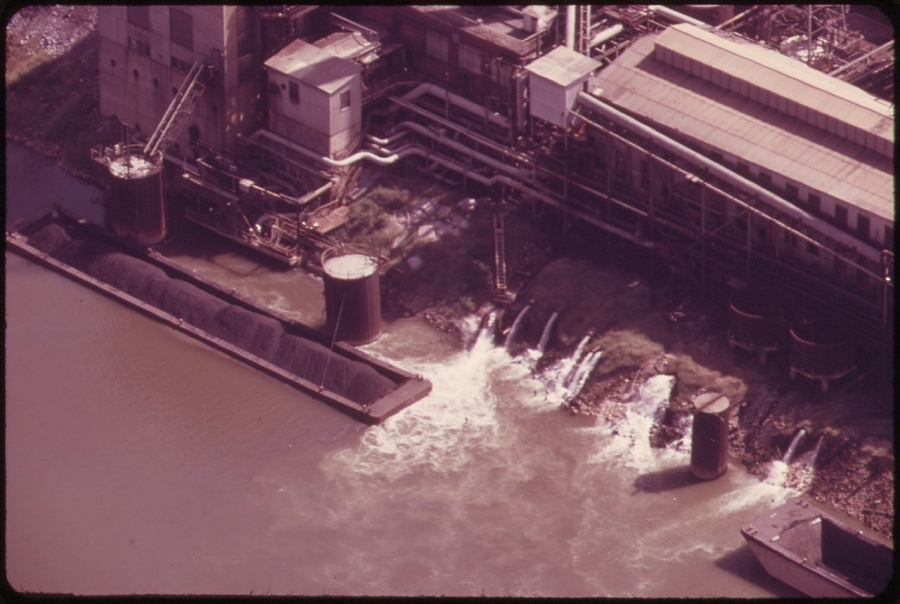Carolyn Merchant states in her article, “Shades of Darkness: Race and Environmental History” that “an environmental history of race” should be researched in order to explore environmental racism itself. Her article presents a dichotomous exploitation of minorities in lower-class and minority neighborhoods against pristine, pollution-controlled upper class white neighborhoods. She writes about the correlation between race and environment from several perspectives: the forcing out of Native Americans, slavery and agriculture, African Americans, and the Industrial Age. Merchant lends credence to environmental historians’ connections between racism and the environment. She begins by quoting author, poet, and environmentalist Wendell Berry in his book, The Hidden Wound. Berry writes, “the psychic wound of racism has resulted inevitably in wounds in the land, the country itself.”

Merchant presents a correlation between racism and the environment when it comes to Native Americans. Back in the day, white pioneers saw native lands as good for habitation and superior for agriculture; so, they encroached on native territory, regardless of any laws against doing so. Tribes like the Cherokee tried to assimilate and compromise. However, Andrew Jackson pushed congress to enact the Indian Removal Act in 1830. Eventually, 16,000 Cherokee were led from North Carolina/Tennessee to the Midwest on what we all know as the Trail of Tears. Only about 4,000 Cherokee remained when they reached their destination. Carolyn speculates that naturalists like John Muir nurtured bad sentiments against the Indians. She notes Muir’s disdain for Native Americans in his writings, which presented nature as more significant and more alive than the “savage” Native American. Muir “wrote disparagingly of the Indians,” creating a chasm between beautiful, pure nature, and evil, ugly savages. Naturalist sentiments like Muir’s, she says, is where environmental racism comes to light. Merchant’s reasoning is perhaps made more concrete by environmental racism expert, Robert Bullard, who says, “environment is everything: where we live, work, and play, go to school, as well as the physical and natural world.”1)Article by Lisa Campbell titled “National Parks and Environmental Racism.” If the reader considers Bullard’s statement, it becomes easier to understand how much impact Native American removal had on everyone and everything. Merchant transitions into the 1964 Wilderness Act that preserves our nation’s wildlands and protects those lands from environmental destruction. The Act aimed to, among other good works and intentions, minimize the human footprint. Doing so, however, negated and expunged the hundreds of years Native Americans contributed, maintained, revered, and cared for the same region. Due to this silence and disregard, natives have been, essentially, erased again. Once Native Americans were forced off their lands, an entire ecosystem (and they themselves) changed forever. One good example is the buffalo. Buffalo was once prevalent in Appalachia. The animal was a source of food for Native Americans; and its “hide was processed into various forms of clothing, bags, blankets, and even buffalo hide boats.”2)Article by R. Kelly Coffey titled “When the Buffalo Roamed” White settlers killed them wantonly, sometimes “only for their tongue or other choice cut, with some hunters leaving most of the carcass behind.”3)“When the Buffalo Roamed” By 1820, the buffalo had officially disappeared in Appalachia.
Merchant writes that African Americans have had a harsh and horrific connection to land, thanks to circumstance, industry, and technology. She writes that “white-black differences seemed more pronounced than those between Indians and whites.” According to her, slavery illustrates the relation between race and the environment. Slavery provided free labor in a booming agriculture. As demand rose for goods like cotton or tobacco, more humans were subjugated and abused. Lands suffered in two ways: (1) developed land was used to detriment and ruin, or (2) undeveloped land was obtained and ravaged. Constant planting created soil erosion and degradation. This disregard for the environment shifted to the disregard for humanity. Slaves were beaten, murdered, and dominated. One could say that slaves personally identified with the treatment of the land. To some degree, though, land became a slave’s safe haven. Michael Starkey makes such a point in his dissertation, “Wilderness, Race, and African Americans: An Environmental History from Slavery to Jim Crow.” He writes that “the woods were a place of refuge and safety for blacks.” Starkey refers to Melvin Dixon’s identification of the geographical themes in “wilderness, the underground, and the mountaintop” found in African American music and literature. After slavery was abolished, the freed community in the late 1800s saw a “coincidental order of environmental injustice.”4)Merchant quoting Jeffrey Romm Carolyn Merchant solidifies her main point by citing Supreme Court decisions that paved the way to those environmental inequalities. Racial segregation created poverty as African American futures were only able to reach a certain level. They, therefore, lived in poverty-stricken areas and businesses like industry, coal, oil, and waste facilities had no qualms dumping all their toxicity in these neighborhoods. This ever-present wasteland continues to this day.
Merchant vaguely mentions the Industrial Age as the source for environmental racism. Speaking candidly, businesses eye areas without money, without voices, without repercussion. Appalachian people as a whole experience these realities even today. According to Merchant, segregation made African American neighborhoods a prime target for industry and big business. Donna Stern, chair of the Sierra Club Tennessee chapter in 1993, said: “When you look at the locations of these facilities and you look at the racial composition of the area you see a direct correlation.”
Carolyn Merchant’s article gives much room for thought. Environmental History is an interesting way of viewing the past in relation to humans and the environment. Merchant uses reputable and well-founded references. She expands her thoughts well and makes her point effectively. One thing not considered is the fact that everyone who lives in poverty is affected by pollution and waste dumping. Mountain and holler communities provide evidence of this. In Kingston, (Roane County) Tennessee, 2008, a coal ash spill from a TVA plant dumped over a billion gallons of sludge into the Kingston community and her waterways. What’s in coal ash? Poisonous metals, that’s what. Arsenic, lead, mercury, cadmium, chromium and selenium. And, it’s radioactive. Clean-up crews from the spill – and their families – suffer from serious medical conditions.
Every lower-class and working-class neighborhood – black, native, white, etc. – experiences these issues because of where they live. Maybe poverty is the issue. Perhaps one could call the misuse of lower-class neighborhoods Environmental Classism. As I see it, corporations should take responsibility for the evil deeds they do. Rather than spend their money on the cheapest ways to make money, they should focus on how they treat the lands. Pollution causes sickness, disease, mental impairments, etc. I mean, look at it this way: by dumping waste in working-class neighborhoods, big business only harms their own consumers. Most CEOs would only step foot in poor areas to survey a source for their ultimate greed. They would likely never live in an area they have devastated. It’s not difficult to understand why.
Sources:
- Campbell, Lisa. “National Parks and Environmental Racism.” Panorama. July 27, 2007.
- Charlier, Tom. “Environmental Racism Not Clear-Cut in Memphis.” Commercial Appeal, Sept 19, 1993.
- Merchant, Carolyn. “Shades of Darkness: Race and Environmental History.” Environmental History (Forest History Society and American Society for Environmental History) 8, no. 3 (July 2003): 380-394.
- Starkey, Michael. Wilderness, Race, and African Americans: An Environmental History from Slavery to Jim Crow. Dissertation, Berkeley: University of California, Berkeley, 2005.
- “When the Buffalo Roamed” by Ken Coffey, Appalachian Voices
- “The Idea of Wilderness erases Native People. Here’s How To Fix It.” by By Chris Clarke, January 31, 2017 – KCET
- “Hundreds of Workers Who Cleaned Up the Country’s Worst Coal Ash Spill Are Now Sick and Dying” by Austyn Gaffney, December 17, 2018 – NRDC
- “Coal Ash — An Overlooked Toxic Story That Won’t Go Away” by Joseph A. Davis – Society of Environmental Journalists
- “Radioactive Wastes From Coal-fired Power Plants” by the United States Environmental Protection Agency
Featured image: Beth Tate, Unsplash
References
| ↑1 | Article by Lisa Campbell titled “National Parks and Environmental Racism.” |
|---|---|
| ↑2 | Article by R. Kelly Coffey titled “When the Buffalo Roamed” |
| ↑3 | “When the Buffalo Roamed” |
| ↑4 | Merchant quoting Jeffrey Romm |









Thanks for this important piece. In North Carolina, we’re currently seeing this issue with big industrial hog farms and wood pellet factories. The neighborhoods where they are located are suffering horribly, but have little power to fight against the powers-that-be.